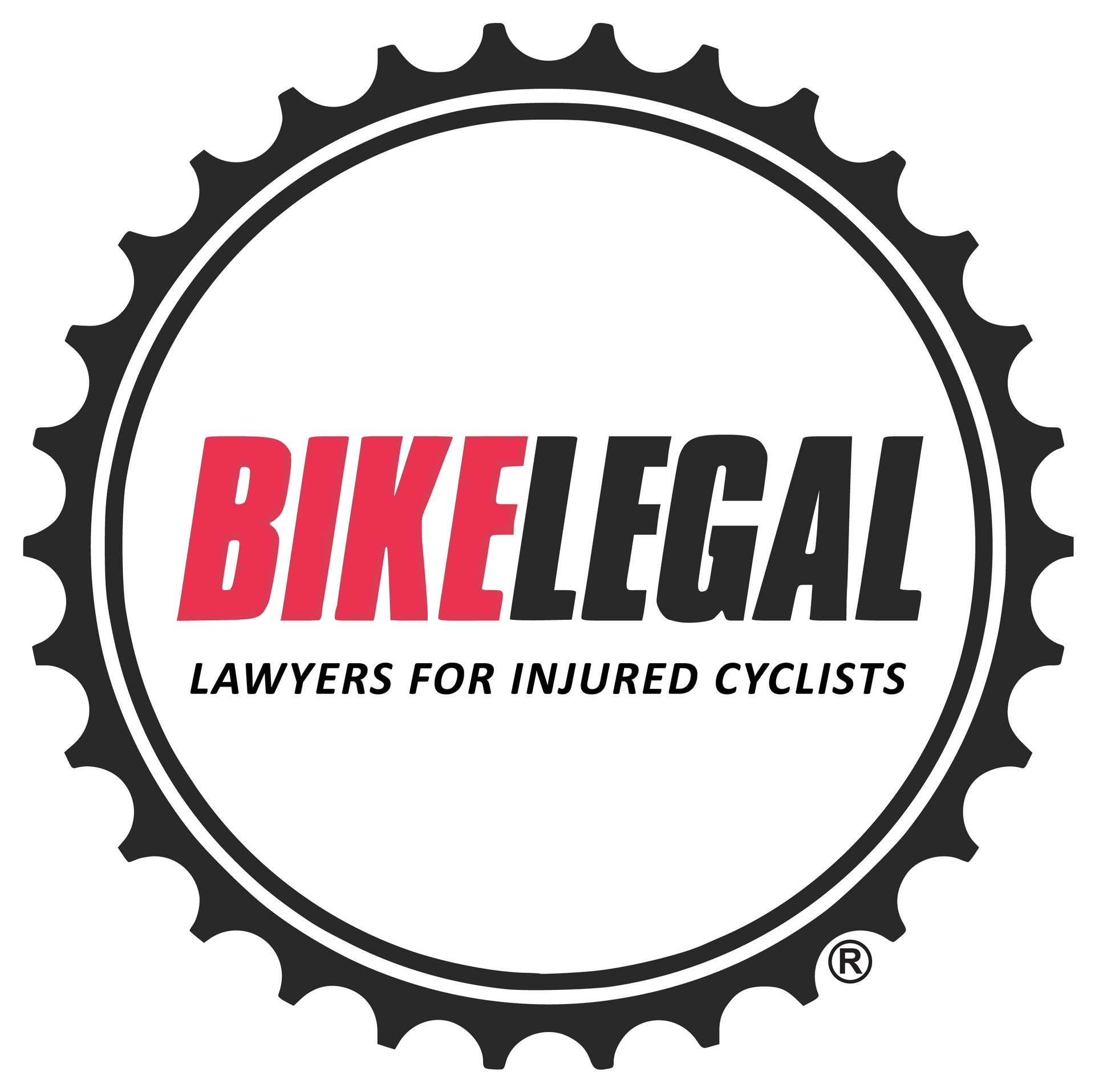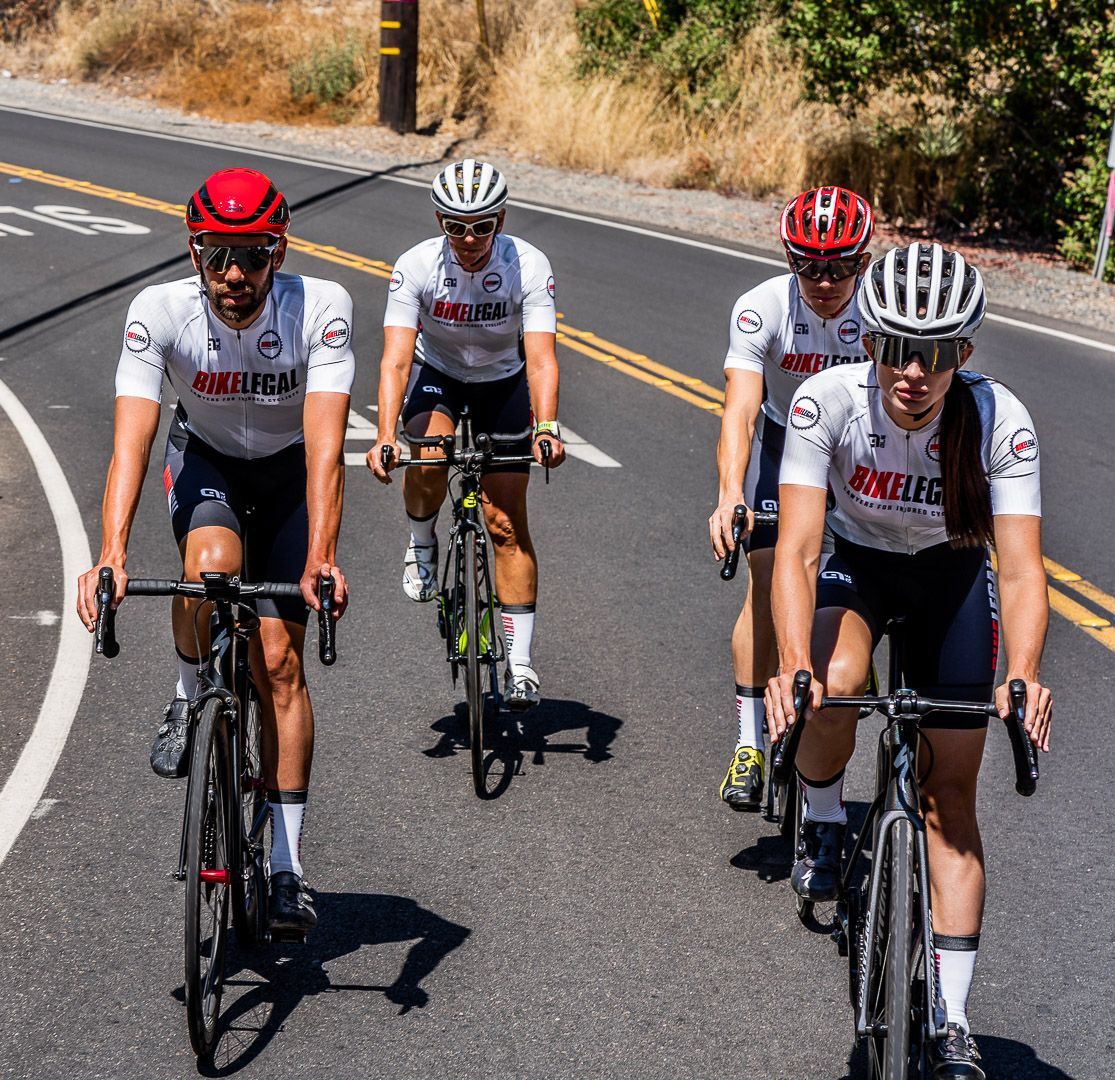What Happens If You Hit a Cyclist with Your Car?
Follow us on
social media!

Every year in the United States, over 45,000 bicycle accidents occur, often involving motor vehicles. Sharing the road can lead to unexpected situations for both the drivers and the cyclists.
This article provides a comprehensive guide on what to do if you hit a cyclist with your car, detailing the immediate steps you should take, the potential legal consequences, and how to handle insurance claims. Additionally, we'll explore general bicycle accident statistics in the U.S., identify the most hazardous zones for cyclists, and explain the rules for sharing the road responsibly. This information aims to prepare drivers to handle such incidents responsibly and promote safer interactions between cyclists and motorists.
Here's what we'll cover:
- Immediate steps to take if you hit a cyclist with your vehicle
- Legal consequences of hit and run accidents
- A brief overview of bicycle accidents in the U.S.
- Identifying the most hazardous zones for cyclists
- Understanding share-the-lane rules and requirements
- Potential damages a cyclist can claim
- The implications of uninsured motorists in bicycle accidents
- How insurance companies handle bicycle accidents with motor vehicles
What To Do If You Hit a Cyclist With Your Car
We all know accidents can happen, even to the best of us. If you find yourself in a situation where you've hit a bicyclist with your car, it's crucial to handle the situation responsibly and legally. Here’s a list of steps you should follow:
- Stop Immediately: Leaving the scene of an accident, especially when someone is injured, can result in criminal charges. Ensure you stop your vehicle safely and do not obstruct traffic.
- Check on the Cyclist: Assess the cyclist’s condition without moving them (unless necessary for safety), and call emergency services if there are any injuries.
- Call the Police: It’s important to report the accident to the police. They will document the scene and file a report, which is crucial for insurance claims and legal matters.
- Exchange Information: Share your contact and insurance details with the cyclist. Also, get their information, if possible, and details from any witnesses.
- Document the Scene: Take photos of the accident scene, including the damage to your car, the bicycle, any visible injuries, and the surrounding area.
- Notify Your Insurance: Report the accident to your insurance company as soon as possible. Provide them with all the gathered information and cooperate with their investigation.
A look at the legal consequences
The legal consequences for hitting a cyclist with your car can vary widely based on the specifics of the incident. Here are some example scenarios that illustrate different outcomes:
- Traffic Citations:
- Failure to Yield: If the accident occurred because you failed to yield the right of way to the cyclist, you might receive a citation for this traffic violation.
- Running a Red Light or Stop Sign: Hitting a cyclist after running a red light or stop sign could result in a citation for disregarding traffic controls.
- Criminal Charges:
- Reckless Driving: If you were driving in a manner that showed a willful or wanton disregard for the safety of others, such as speeding excessively or weaving through traffic, you could be charged with reckless driving.
- Driving Under the Influence (DUI): If you were under the influence of alcohol or drugs at the time of the accident, you could face DUI charges, which carry severe penalties, especially when they result in injury.
- Negligence:
- Distracted Driving: If you hit a cyclist because you were texting, talking on the phone, or otherwise distracted, you could be found negligent, leading to liability for the cyclist’s damages.
- Failure to Observe Traffic Laws: Failing to observe speed limits, lane rules, or other traffic laws that directly contribute to an accident can be considered negligence, making you liable for the cyclist's injuries and property damage.
- Vehicular Manslaughter:
- Fatal Accidents: In the tragic event that a cyclist dies from injuries sustained in the collision, and your actions are found to be criminally negligent or reckless, you could face charges of vehicular manslaughter.
These scenarios underscore the importance of driving attentively and responsibly, especially when sharing the road with more vulnerable users like cyclists. The legal outcomes depend on many factors, including the jurisdiction, the details of the accident, and the severity of the injuries or damages caused.
Why You Should Never Flee The Scene After Hitting A Bicycle

A hit-and-run accident occurs when a driver involved in a collision with a person, cyclist, vehicle, or property leaves the scene without stopping to provide aid, exchange information, or report the incident to authorities.
Why are hit-and-run accidents illegal?
Hit-and-run accidents are illegal for several reasons:
- Moral Obligation: Leaving the scene of an accident violates the basic human duty to help someone who may be injured.
- Legal Requirement: Drivers have a legal responsibility to remain at the scene, exchange information, and cooperate with the police investigation.
- Public Safety: Fleeing the scene can delay medical attention for the injured, potentially endangering their lives.
- Investigation and Justice: Leaving the scene hinders the investigation and prevents the injured party from seeking compensation for damages and injuries.
Catastrophic legal consequences of hit-and-run accidents
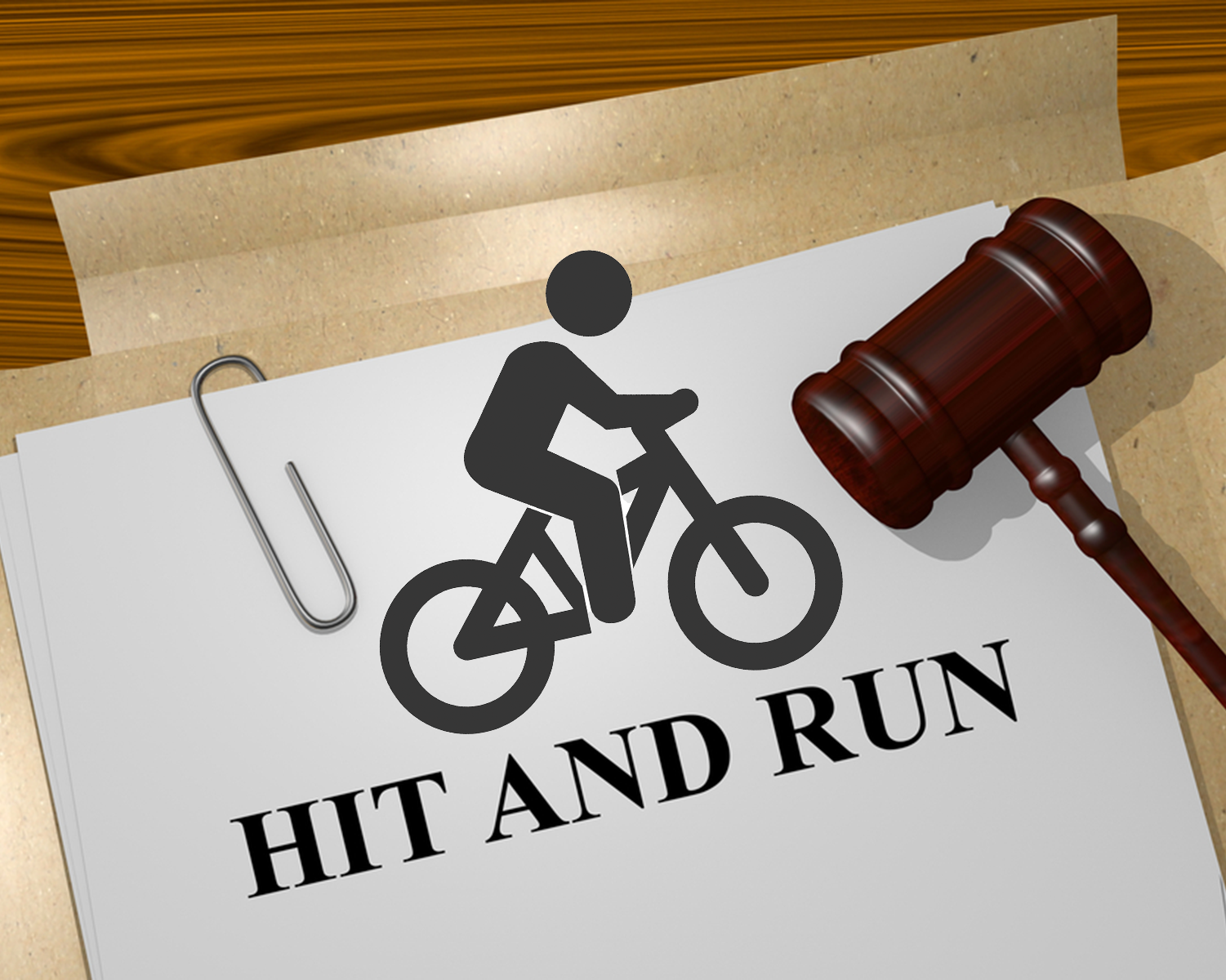
The legal implications of a hit-and-run can be devastating:
- Criminal Charges: Drivers can face felony or misdemeanor charges, depending on the severity of the injuries and property damage.
- Severe Penalties: Penalties can include hefty fines, jail time, suspension or revocation of the driver's license, and mandatory community service.
- Civil Liability: The driver can be sued for damages, including medical expenses, lost wages, pain and suffering, and punitive damages in some cases.
- Financial Ruin: The financial burden of legal fees, fines, and damages can be overwhelming.
- Reputation Damage: A hit-and-run conviction can tarnish a driver's reputation and have long-term consequences for their personal and professional life.
If you're involved in an accident, always stop and take responsibility. The consequences of fleeing are far more severe than staying and doing the right thing. In cities like Los Angeles, leaving the scene of a car accident involving a cyclist can lead to severe legal consequences. The same holds in Florida, under the Aaron Cohen Life Protection Act, emphasizing the gravity of hit-and-run offenses.
A Quick Look at Bicycle Accidents in the U.S.
The road is a tapestry of travelers, each with their own destination. Among these, cyclists weave their stories, often with risks lurking at every turn. The statistics are more than just numbers; they tell a story of caution, vulnerability, and the need for awareness.
- In 2019: A stark figure emerged — 846 cyclists lost their lives due to motor vehicle collisions. This isn't just a number—it's a call to action.
- Decade overview (2010-2019): While total traffic fatalities increased by 9%, non-motorist deaths, including cyclists, skyrocketed by 44%. This disproportionate rise highlights a growing concern on our roads.
- Time of accidents: 8% of fatal bike accidents occurred in the dark, most between 6:00 and 9:00 pm. It's a chilling reminder of the dangers that lurk when visibility wanes.
- Economic impact: Annually, the aftermath of bike injuries and deaths from crashes exceeds $23 billion. These expenses include lost productivity, healthcare, and quality of life.
Age and gender insights
- Adults aged 55 to 69 have the highest bicycle death rates.
- Gender disparity: Male cyclists encounter bodily injury and death rates five and six times higher, respectively, than their female counterparts.
- Youth at risk: Adolescents, teens, and young adults lead in emergency department visits, highlighting a critical need for targeted safety measures.
These figures are a clarion call for change, urging us to foster safer environments for cyclists and all road users. Remember, awareness is the first pedal stroke toward safety and coexistence on our shared roads.
Key Hazardous Areas for Cyclists: Where Drivers Need to Exercise Increased Caution
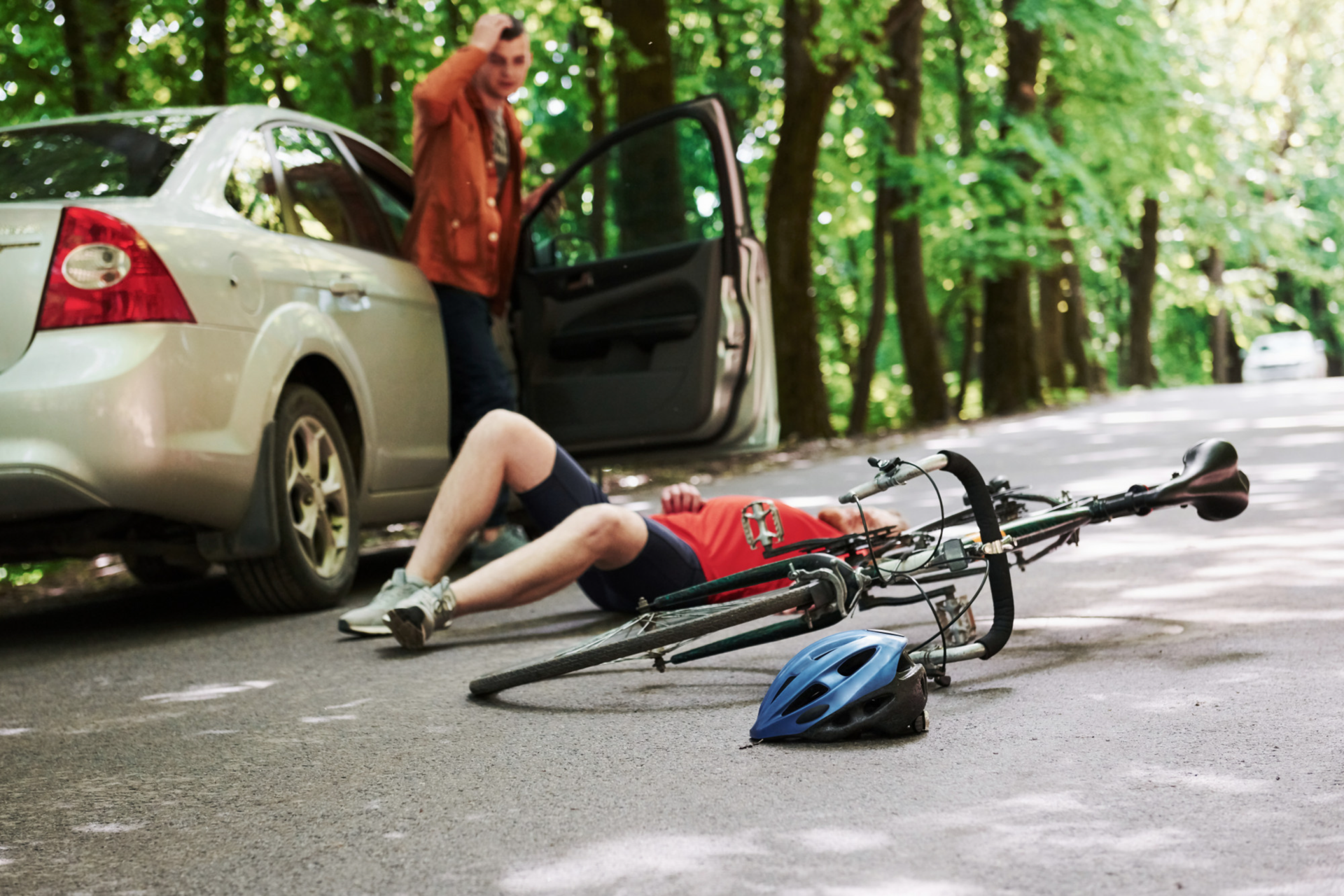
Cyclists often face increased risks in certain areas on the road due to various factors such as visibility, traffic flow, and road design. Drivers should be particularly cautious in these hazardous areas to prevent accidents and ensure safety for all road users:
Intersections
- High Risk: Intersections are common sites for bicycle accidents. Cyclists may be less visible to drivers, especially when making turns.
- Driver Caution: Always check for cyclists when approaching intersections, especially before turning right or left. Be aware that cyclists may cross when you are making turns, even if they are coming from the opposite direction.
Roundabouts
- Complex Navigation: Roundabouts can be tricky for both cyclists and drivers due to their circular layout and the need to yield to traffic already in the circle.
- Driver Caution: Reduce speed when entering roundabouts and be prepared to yield to cyclists who may travel at a different speed or take a different line than expected through the roundabout.
Bike Lanes
- Bike Lane Intrusions: Vehicles crossing or turning through bike lanes can pose risks to cyclists, particularly if drivers do not check their mirrors or blind spots.
- Driver Caution: Always look for cyclists before crossing a bike lane to turn or when entering/exiting a road. Do not drive in bike lanes and watch out for cyclists when you are parked adjacent to a bike lane to avoid "dooring" incidents.
Parked Cars
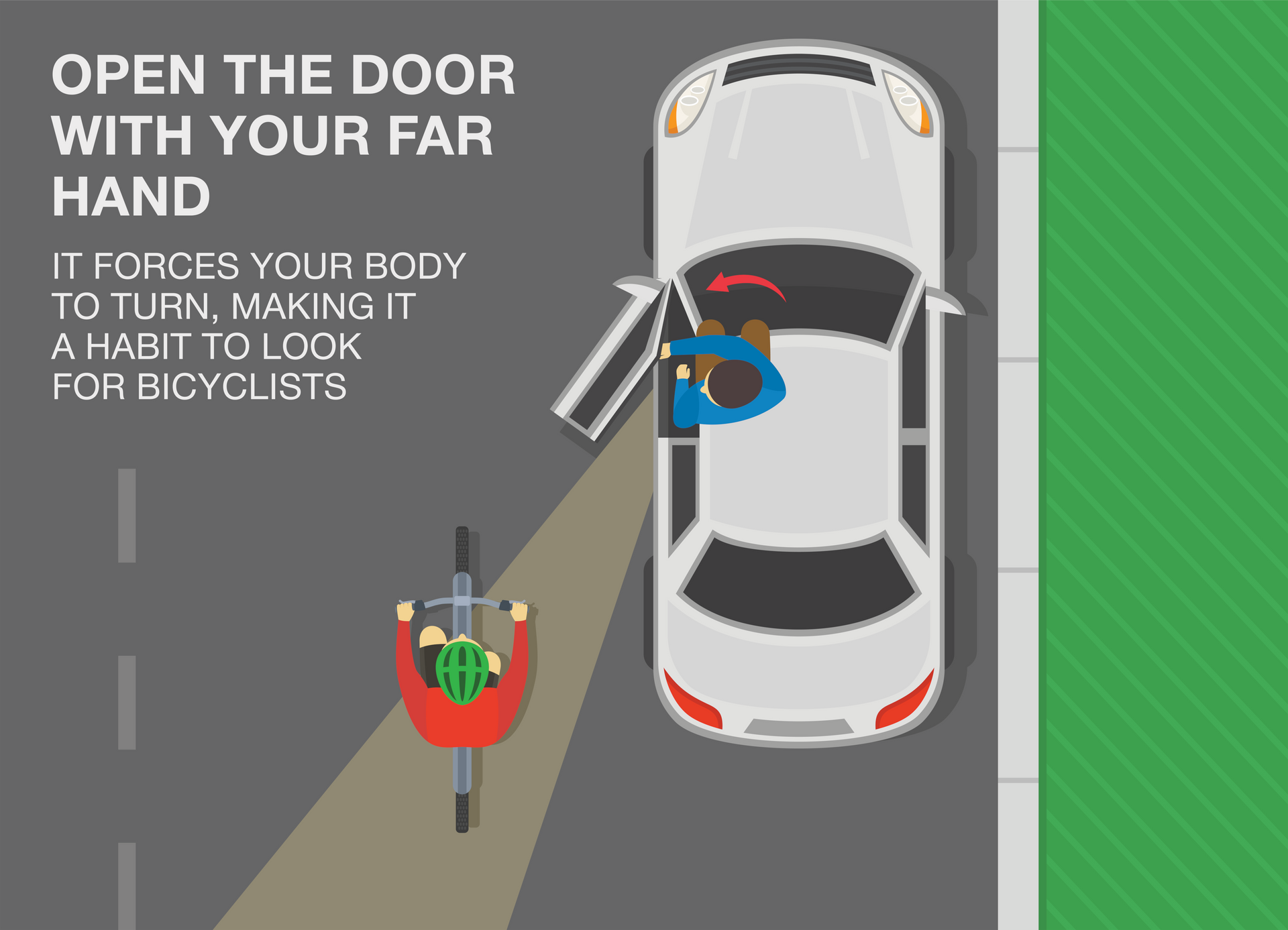
- Dooring: “Dooring” is a significant hazard for cyclists, occurring when a car door is opened in front of an oncoming cyclist.
- Driver Caution: Always check for passing cyclists before opening your car door. Use the “Dutch reach” method (opening the door with the hand furthest from the handle) to naturally turn your body and look for approaching cyclists.
Busy Urban Streets
- Obstacles and Narrow Lanes: Urban areas often have heavy traffic, frequent stops, and narrow lanes, which can squeeze cyclists into dangerous positions.
- Driver Caution: Maintain a vigilant watch for cyclists, especially in congested urban areas. Keep a safe distance and be prepared for unexpected movements from cyclists navigating through obstacles or potholes.
School Zones and Residential Areas
- Children on Bikes: These areas may have young, less experienced cyclists. Children might not always follow predictable patterns and can be impulsive.
- Driver Caution: Drive slowly and attentively in areas where children are likely to be cycling, particularly around schools during opening and closing times.
Rural Roads
- Limited Space and Visibility: Rural roads can be narrow with limited shoulders, making it harder for cyclists to stay out of the traffic lane.
- Driver Caution: Be especially cautious on narrow rural roads, passing cyclists only when there is ample visibility and space to do so safely, ideally leaving at least 3 feet of clearance.
By recognizing these hazardous areas and adopting more vigilant and cautious driving practices around them, drivers can significantly reduce the risks faced by cyclists and contribute to safer, more harmonious road use.
Share-the-Road Rules to Live By:
Navigating the roads together requires understanding and respecting each other's space. Here's how cyclists and drivers can coexist safely:
For Both Drivers and Cyclists:
- Respect Each Other: Recognize that both cyclists and drivers have equal rights to use and share the road. Mutual respect can go a long way in preventing accidents.
- Signaling: Both vehicles and cyclists should signal when changing lanes. Cyclists often use hand signals, so it's crucial for drivers to recognize and respect these.
- Stay Educated: Both cyclists and drivers should stay informed about their local traffic laws concerning cycling. Education about road sharing responsibilities helps everyone.
- Be Patient: Understand that accommodating each other, especially in dense urban areas or during heavy traffic, can reduce stress and promote safer interactions.
For Drivers
- Recognize Cyclists’ Right to the Road: Bicycles have the legal right to use the road, just like any motor vehicle. It's essential that everyone respects this right and shares the road responsibly.
- Be Aware of Cyclists: Always check for cyclists, especially when turning or opening your car door on the street side. Use your mirrors and be cautious of blind spots.
- Give Space: Maintain at least a 3-foot clearance when passing cyclists. More space is better, especially at higher speeds or in areas with narrow roads.
- Reduce Speed: Slow down when passing cyclists and in areas frequented by bikers, such as near schools and in residential neighborhoods.
- Anticipate Sudden Movements: Be aware that cyclists may need to maneuver around obstacles like potholes, wet leaves, or debris. Expect the unexpected.
- Communicate Clearly: Use your indicators early to alert cyclists of your intentions so they can react accordingly.
For Cyclists
- Follow Traffic Laws: Cyclists should adhere to the same traffic signals and signs as motorists. This includes stopping at red lights and stop signs, and yielding when required.
- Use Bike Lanes: Use designated bike lanes or stay to the right as long as it is safe to do so.
- Signal Intentions: Always use hand signals to indicate turns or stops. This makes your actions predictable to drivers.
- Stay Visible: Wear bright clothing and use lights and reflectors, especially in low-light conditions. Making yourself seen is a key part of staying safe.
- Avoid Distractions: Just like drivers, cyclists should avoid using mobile devices or anything that could distract them while riding.
Preventing Road Rage When Driving Near Cyclists
- Stay Patient: Cyclists may travel at a slower speed than motor vehicles. Exercise patience and wait for a safe opportunity to pass. For example, if a cyclist is ahead of you and there’s no safe passing space, slow down and wait until it’s safe to overtake them with ample clearance.
- Give Them Space: Always maintain a minimum of three feet of space when passing cyclists to ensure their safety. This reduces the chance of accidental contact and provides a buffer for both parties. For example, if you’re on a narrow road, wait until you can give the cyclist a wide berth before passing.
- Avoid Aggressive Maneuvers: Never honk, rev your engine, or make sudden moves towards cyclists as these actions can startle them and cause accidents. For example, if you’re approaching a cyclist from behind, slow down gradually rather than honking to signal your presence.
- Respect Bike Lanes: Do not drive or park in bike lanes. These lanes are designated for cyclists to ensure their safety and allow them to travel without interference from motor vehicles. For example, if you need to turn right and there’s a bike lane, yield to any cyclists before crossing the lane.
- Stay Alert: Be extra vigilant in areas where cyclists are common, such as urban streets, parks, and near schools. For example, always check your mirrors and blind spots for cyclists before making turns or changing lanes.
- Anticipate Their Actions: Cyclists might need to swerve to avoid obstacles like potholes or debris. Be prepared for sudden movements by giving them plenty of room and reducing your speed. For example, if you see a cyclist approaching a parked car, anticipate that they might veer slightly to the left to avoid the car door.
- Communicate Clearly: Use your signals well in advance to indicate turns or lane changes, so cyclists know your intentions and can react accordingly. For example, if you’re turning right and a cyclist is approaching from behind, signal early to give them time to adjust their path.
- Educate Yourself: Understanding the challenges and rights of cyclists can foster empathy and patience. For example, learning about the difficulties cyclists face on the road can help you appreciate their perspective and drive more considerately.
- Report Dangerous Behavior: If you witness aggressive or unsafe behavior from another driver towards a cyclist, report it to the authorities. Providing details like the vehicle’s make, model, color, and license plate number can help improve safety on the roads.
Potential Damages a Cyclist Can Claim in a Bicycle Accident
Here's a breakdown of the potential damages a cyclist can pursue:
- Economic damages: These are quantifiable losses that have a direct impact on your finances.
- Medical expenses: This includes costs for emergency services, hospital stays, medications, physical therapy, and any future medical care related to your injuries.
- Lost wages: If your injuries prevent you from working, you can claim compensation for lost income and future earning capacity.
- Property damage: Compensation for repairs or replacement of your bicycle and any other personal property damaged in the accident.
- Non-economic damages: These damages are more subjective and compensate for non-financial losses.
- Pain and suffering: Compensation for the physical pain and emotional distress you've endured because of the accident.
- Emotional distress: For the psychological impact of the accident, such as anxiety, depression, and trauma.
- Loss of enjoyment of life: If your injuries prevent you from engaging in hobbies or activities you once enjoyed, you can get a personal injury protection claim for this loss.
- Punitive damages:
- In cases where the defendant's conduct was particularly egregious or reckless, punitive damages may be awarded to punish the wrongdoer and deter similar behavior in the future.
The Insurance Process for Car Accidents with Cyclists
If you hit a cyclist with your car, the process involving your insurance can vary depending on several factors such as your specific insurance policy, the laws in your jurisdiction, and whether you were at fault. Here’s a general outline of what might happen:
Determination of Fault
- Fault Assessment: Initially, the insurance company will investigate the accident to determine fault. This involves reviewing the police report, statements from you and the cyclist, witness accounts, and any physical evidence from the scene.
- No-Fault States: If you live in a no-fault state, each party’s insurance company covers their own losses regardless of who caused the accident. However, this doesn’t prevent lawsuits in cases of serious injury or death.
Insurance Coverage Types
- Liability Insurance: If you are found at fault, your liability insurance will cover the damages and injuries to the cyclist up to your policy’s limits. This includes medical expenses, loss of income, pain and suffering, and sometimes legal fees if the cyclist decides to sue.
- Uninsured/Underinsured Motorist Coverage: If the cyclist is at fault and they do not have sufficient insurance to cover your damages, your uninsured or underinsured motorist coverage may cover your expenses.
Claims Process
- Filing a Claim: You should notify your insurance company immediately after the accident, regardless of fault. Provide all necessary documentation and cooperate fully with the insurance adjusters.
- Adjuster's Role: An insurance adjuster will be assigned to your case to evaluate the claim, inspect the damage to both the vehicle and the bicycle, and assess any bodily injuries.
- Settlement: If your insurer finds you at fault, they will likely negotiate a settlement with the cyclist or their attorney. Your insurance may cover these expenses up to the limit of your policy.
Potential Increases in Premiums
- Impact on Premiums: If you are found at fault, it’s possible that your insurance premiums may increase. This is because insurers may view you as a higher risk.
Legal and Financial Responsibility
- Excess Costs: If the damages or medical costs exceed your insurance coverage limits, you may be personally liable for the excess amount.
- Legal Implications: There can also be legal consequences, especially if the cyclist is seriously injured. You might face civil liability and, depending on the circumstances, criminal charges.
Recommendations
- Review Your Policy: It’s advisable to review your insurance policy to understand what is covered and what your limits are. Consider talking to your insurance agent to adjust your coverage to better protect against potential risks.
- Legal Consultation: In the event of an accident, consulting with a legal expert can provide you with guidance specific to your situation and jurisdiction.
Understanding how your insurance works in the event of an accident with a cyclist can help you better prepare for and manage the aftermath should such an unfortunate situation occur.
What if You Don't Have Enough Insurance to Cover Damages and Injuries?
When an uninsured or underinsured motorist hits a cyclist, the situation can become complex due to the lack of insurance coverage from the at-fault driver. However, the cyclist may still have several avenues to pursue compensation for damages and injuries:
- Personal Insurance Coverage: If the cyclist has their own auto insurance with Uninsured Motorist (UM) coverage, they may be able to file a claim under this policy. UM coverage is designed to protect policyholders in the event they are injured by an uninsured driver.
- Health Insurance: For immediate medical expenses, the cyclist can use their health insurance. However, this might not cover all costs, such as ongoing treatment, rehabilitation, or lost wages.
- Homeowner’s or Renter’s Insurance: In some cases, a cyclist's homeowner’s or renter’s insurance policy may provide additional coverage for personal injury or property damage resulting from such an incident.
- Legal Action: The cyclist may have the option to pursue legal action against the uninsured motorist. By filing a personal injury lawsuit, the cyclist could seek compensation for damages, including medical expenses, pain and suffering, lost wages, and other related costs. However, recovering damages from an individual without insurance can be challenging, as the uninsured motorist may not have the assets to cover the cyclist’s losses.
- State Uninsured Motorist Funds: Some states have special funds to compensate individuals injured by uninsured motorists. The availability and criteria for these funds vary by state.
About uninsured/underinsured motorist coverage (UM/UIM)
If an uninsured motorist hits a cyclist, another option for compensation is if the cyclist has uninsured/underinsured motorist coverage (UM).
UM coverage applies to cyclists if they have such coverage through their own auto insurance policy or if they are covered under a household family member’s policy. Essentially, UM coverage serves as a financial safety net for cyclists in accidents involving uninsured or underinsured motorists.
This coverage can help pay for
- Medical Expenses: Costs for medical treatment related to injuries from the accident. This can include hospital stays, doctor visits, surgeries, medications, physical therapy, and any other necessary medical treatments.
- Pain and Suffering: Compensation for physical pain and emotional distress resulting from the accident. This category is more subjective and varies widely based on individual circumstances and the severity of injuries.
- Lost Wages: If the injuries from the accident prevent the cyclist from working, UM coverage may compensate for lost income during the recovery period.
- Future Medical Expenses: In cases where the accident results in long-term or permanent injuries requiring ongoing medical care, UM coverage may also contribute to future medical costs.
- Loss of Earning Capacity: If the injuries sustained in the accident affect the cyclist's ability to earn a living in the future, UM coverage may provide compensation for this loss.
- Funeral Expenses: In the unfortunate event that a collision results in the cyclist's death, UM coverage may cover funeral and burial expenses.
Read next: UM vs UIM Insurance Coverage: What You Need to Know
What Happens if a Cyclist Pursues Legal Action Against Me?
If you find yourself involved in an accident with a cyclist and they decide to pursue legal action, it’s important to understand the potential consequences and the legal process. Here’s a breakdown of what to expect:
Role of a Bicycle Accident Lawyer: Law firms specializing in bicycle accidents, like Bike Legal, play a crucial role in representing cyclists. These firms have expertise in handling such cases and can provide comprehensive support to the injured party. They will gather evidence, negotiate with insurance companies, and advocate for the cyclist’s rights in court.
For example, Bike Legal might help the cyclist collect medical records, witness statements, and traffic camera footage to build a strong case.
Types of Damages and Compensation a Cyclist May Seek: Cyclists involved in accidents can seek various types of damages, including:
- Medical Expenses: Covering the cost of medical treatment, rehabilitation, and any future medical needs related to the accident.
- Lost Wages: Compensation for the income lost due to the inability to work during recovery.
- Pain and Suffering: Damages for the physical pain and emotional distress caused by the accident.
- Property Damage: Reimbursement for the repair or replacement of the bicycle and any other personal property damaged in the accident.
- Punitive Damages: In cases of gross negligence or malicious intent, the cyclist might seek punitive damages to punish the wrongdoer.
Timeline for a Cyclist to File a Lawsuit: In many states, this period is typically two to three years from the date of the accident. However, the timeline for filing a lawsuit varies by jurisdiction, and there is a statute of limitations that limits the time frame within which the cyclist must file a claim to avoid losing the right to seek compensation.
Process and Expectations if the Case Goes to Court: If the case proceeds to court, the following steps typically occur:
- Filing the Complaint: The cyclist’s lawyer will file a legal complaint outlining the accident, injuries, and damages sought.
- Discovery Phase: Both parties exchange evidence and information through depositions, interrogatories, and document requests.
- Settlement Negotiations: Often, parties may reach a settlement before the case goes to trial. Settlement discussions can happen at any stage of the legal process.
- Trial: If no settlement is reached, the case goes to trial, where both sides present their evidence and arguments. A judge or jury then decides the outcome.
- Verdict and Compensation: If the court rules in favor of the cyclist, they will be awarded compensation as determined by the court.
Insurance Laws in California for Motorists
- Mandatory minimums: California mandates minimum insurance coverage for all drivers, aiming to ensure financial responsibility at accident scenes.
- The coverage breakdown:
- $15,000 for personal injury or death per person in an accident.
- $30,000 for injury or death of two or more people.
- $5,000 for property damage.
The reality on the roads
- A common risk: Despite these laws, a significant number of motorists in Orange County drive without insurance, heightening risks for cyclists.
- State efforts: California encourages obtaining UM/UIM policies, requiring insurers to offer these options in writing. Rejecting this coverage requires a signed waiver, but think twice before opting out.
Conclusion: Fostering Safer Roads Through Awareness and Action
The aftermath of a vehicle-cyclist collision requires prompt and responsible actions, not only to comply with legal requirements but also to uphold safety for all road users. Whether you're a driver or a cyclist, understanding the nuances of road sharing, recognizing hazardous zones, and being aware of the legal implications are essential for preventing accidents and fostering a culture of respect and safety.
About Bike Legal: Advocating for Cyclist Safety and Road-Sharing Education
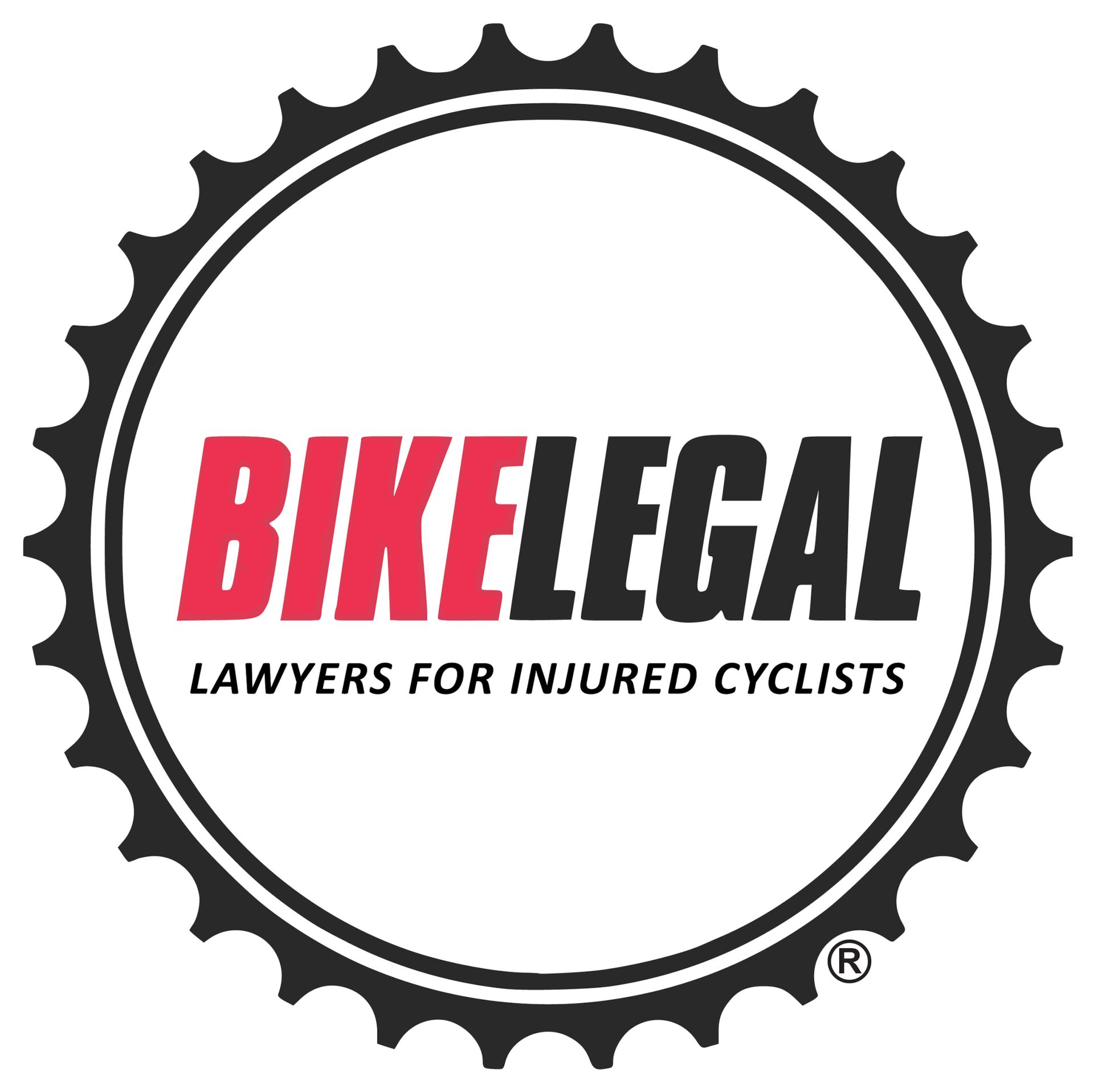
Bike Legal is a dedicated advocate for cyclists, driven by a commitment to ensure their safety and rights on the road. Our mission extends beyond legal representation; we strive to educate both cyclists and drivers about the importance of sharing the road responsibly. Through our extensive resources, including articles on laws and safety, we aim to foster a better understanding and coexistence between all road users.
We encourage drivers to explore our articles to gain deeper insights into cyclist behaviors and their rights to the road. At Bike Legal, we remain committed to educating both cyclists and drivers, advocating for cyclist rights, and enhancing coexistence on the road. We encourage you to explore further resources and join us in making our roads safer for everyone.
FAQs
What happens if you hit someone on a bike with your car?
If you hit a cyclist with your car, you must stop immediately, ensure the safety of the injured person, call emergency services, and report the accident to the police. You're required to provide your contact and insurance information to the cyclist. Legally, you could face civil liability for the cyclist's injuries and damages, and depending on the circumstances, there could be criminal charges, especially if negligence or reckless driving was involved.
What to do if hit by a car on a bike?
If you're hit by a car while on your bike, prioritize your safety by moving out of the road. Call 911 if you're injured, and ensure a police report is filed. Exchange information with the driver, gather contact details of witnesses, and document the scene and your injuries with photos.
Seek medical attention immediately, even if you feel fine, as some injuries may not be immediately apparent. Consider consulting with a bicycle accident attorney to understand your rights and potential compensation.
What is the penalty for hitting a cyclist?
The penalty for hitting a cyclist varies depending on the jurisdiction and the specifics of the incident. Penalties can range from fines and points on the driver's license to more severe consequences like criminal charges for reckless driving or vehicular assault. If the driver is found to be at fault, they may also be liable for compensating the cyclist for injuries, damages, and any other losses incurred.
What are the chances of getting hit by a car on your bike?
The chances of getting hit by a car while cycling depend on various factors, including location, time of day, and adherence to traffic laws. While cycling is generally a safe mode of transportation, risks exist, particularly in urban areas with high traffic volumes. Cyclists can reduce their risk by following traffic laws, wearing visible clothing, using bike lanes where available, and being aware of their surroundings.
